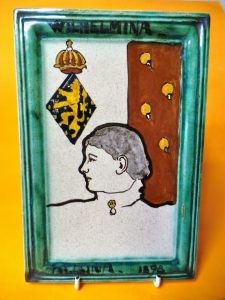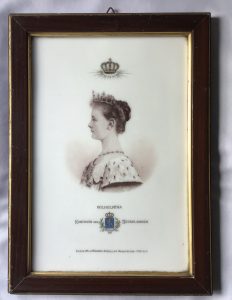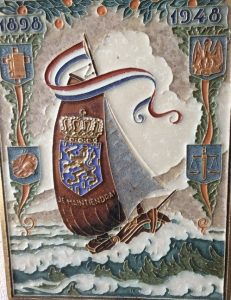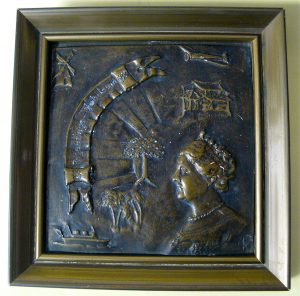
Clay objects have been made for thousands of years, when clay is baked at a temperature of 800-1000 degrees Celsius, pottery is created.
About 1000 years before Christ, tin glaze was first used in the Middle East, so that the pottery was no longer porous and was provided with a beautiful shiny layer.
Spain developed into a major producer of tiles in the 15th century and in the 16th century many potters who made tiles also settled in Antwerp.
In the early 17th century, tile potteries were also built in the Netherlands in Gouda, Delft, Makkum, etc.
Tile panels with images of House of Orange princes were made in the Netherlands from the early 17th century. They were made as part of a wall tiling or as part of a fireplace surround. In this way, people expressed their political preference.
The first tiles made specifically as a reminder and not as part of a tableau have been made as far as we have been able to trace for the inauguration of Queen Wilhelmina. The Rozenburg firm from The Hague has made a number of slab tiles for this historic event, all in a very limited edition and now very sought after.
The German firm Krumm from Crefeld has also made a number of beautiful portrait tiles of Queen Wilhelmina in 1898, now very rare.

Rare Rozenburg tile made in 1898 inauguration Queen Wilhelmina.



Three portrait tiles made in Germany by Krumm
A tile in memory of a royal event is typically Dutch, for example, in Great Britain, a country where many royal commemoration souvenirs are made, you will rarely find commemorative tiles.
Dutch factories that have made commemorative tiles include Mosa, Westraven, Goedewaagen and the Porceleyne Fles from Delft.
The latter made a series of Cloisonné tiles for royal events.
Cloisonné is a French word for septum. With these tiles, the different colors of glaze are kept separate by means of clay edges.
The first cloisonné tile that could be hung as a decorative tile on the wall is from 1913, made for 100 years of independence. Later tiles for the anniversaries of Wilhelmina in 1923, 1938 and 1948 followed.
Such tiles were also made for the wedding of Juliana and Bernhard and for the births of the princesses Margriet and Christina.
These tiles are regularly offered on various auction sites and are not really rare.

Example of a Cloisonné tile Porcelyne Fles Factory
Similarly, the Goedewaagen tile from 1938 that was offered to Amsterdam school youth were made in their thousands, so not rare at all.

In 1934 a tile was made in memoriam of Queen Emma.

In memoriam Delft blue tile 1858-1934
In 1948 the tile factory Russel-Tiglia from Tegelen came with a number of beautiful relief tiles on the occasion of the 50th anniversary of Queen Wilhelmina.


Many commemorative tiles were also made later, all mass production, including for highlights from the period Juliana & Bernhard and Beatrix and Claus.
However, these tiles were often of lesser quality.
Commemorative tiles are unfortunately hardly made anymore, another tradition that has ended.
Information sources:
Tile Museum
Catalog Cloisonné tiles 2002.
Oranje Boove sheet friends Dutch ceramics from

Tile made in 1938 in the Dutch Indies Wilhelmina 1938












